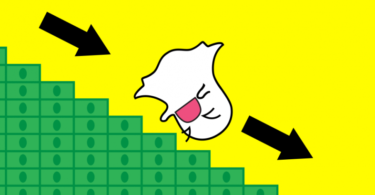The whole idea behind ETFs is to buy a basket of stocks in one fell swoop. By doing so, you gain instant diversification.
You can go as broad or narrow in your focus as you like. You could buy an ETF that’s tied to the S&P 500, one that’s pegged to small caps, or one that specializes in, for example, semiconductors or cybersecurity.
This is an asset class that belongs in every tech investor’s portfolio. If you don’t have the time or ability to pick the winners from the losers, with ETFs the stock whizzes do the heavy lifting while you pocket the gains.
No wonder, they’re so popular…
The total size of the U.S. ETF industry has increased by nearly 19% over the last 12 months, according to an analysis by Forbes. The global ETF market is worth some $4.94 trillion.
Not bad for an investment that got its start less than 25 years ago, in early 1993 with just one ETF. Today, there’s no shortage to choose from. As of late 2017, there were nearly 5,400 ETFs traded globally, up from about 4,800 at the end of 2016.
Now, here’s why volume should not be the deciding factor when you sit down to choose an ETF to invest in.
Unlike stocks, ETFs don’t really rely on volume for the true liquidity. Rather than in the ETF itself, we look for good volume in the stocks the fund holds.
Let’s say you find an ETF that tracks the S&P 500 but has volume of just 10,000 shares a day. That sounds illiquid. However, the stocks represented by this fund trade hundreds of millions of shares a day.
Should the ETF’s price drift too far from its net asset value, asset managers known as authorized participants can step in to buy or sell shares. For that reason, even thinly traded ETFs will almost always closely track their underlying indices.
So, instead of wasting time looking at volume, consider using these three ETF Profit Screens when searching for a fund to buy…
ETF Profit Screen No. 1: Expense Ratio
ETFs have gained so much popularity because of their low overhead compared to mutual funds, some of which can have management fees of 5%.
For my money, I rarely buy an ETF with an expense ratio above 1% – and I prefer 0.5% or even lower.
If you’re considering two ETFs with similar ratings and performance, then choose the “cheaper” one. For instance, a semiconductor ETF with an expense ratio of 1% has double the overhead of one whose expense ratio is 0.5%
ETF Profit Screen No. 2: Morningstar Rating
Founded in 1984, Morningstar is a leading provider of independent investment research. It covers roughly 621,000 stocks, mutual funds, and ETFs.
The firm assigns 1 to 5 stars to each of the investments it covers. I avoid ETFs with less than 3 stars because I believe the quality of the fund is more important than volume.
My broker automatically gives me the Morningstar rating for each ETF I screen. If your broker doesn’t, don’t worry. You can get it for free directly from Morningstar’s website.
ETF Profit Screen No. 3: Trend
Wall Street’s fickle nature means that certain sectors will be in or out of favor at any point in time. In other words, don’t buy an ETF in a sector that the sharks are circling.
That said, you should consider the long haul. You can find great bargains in sectors that are temporarily out of favor. You just have to have the confidence to stay with the trend through the ups and downs.
Now, let’s compare two funds with very different volume levels from among the iShares tech funds from BlackRock Inc. (NYSE:BLK), an investment firm with $6.29 trillion in assets under management…







